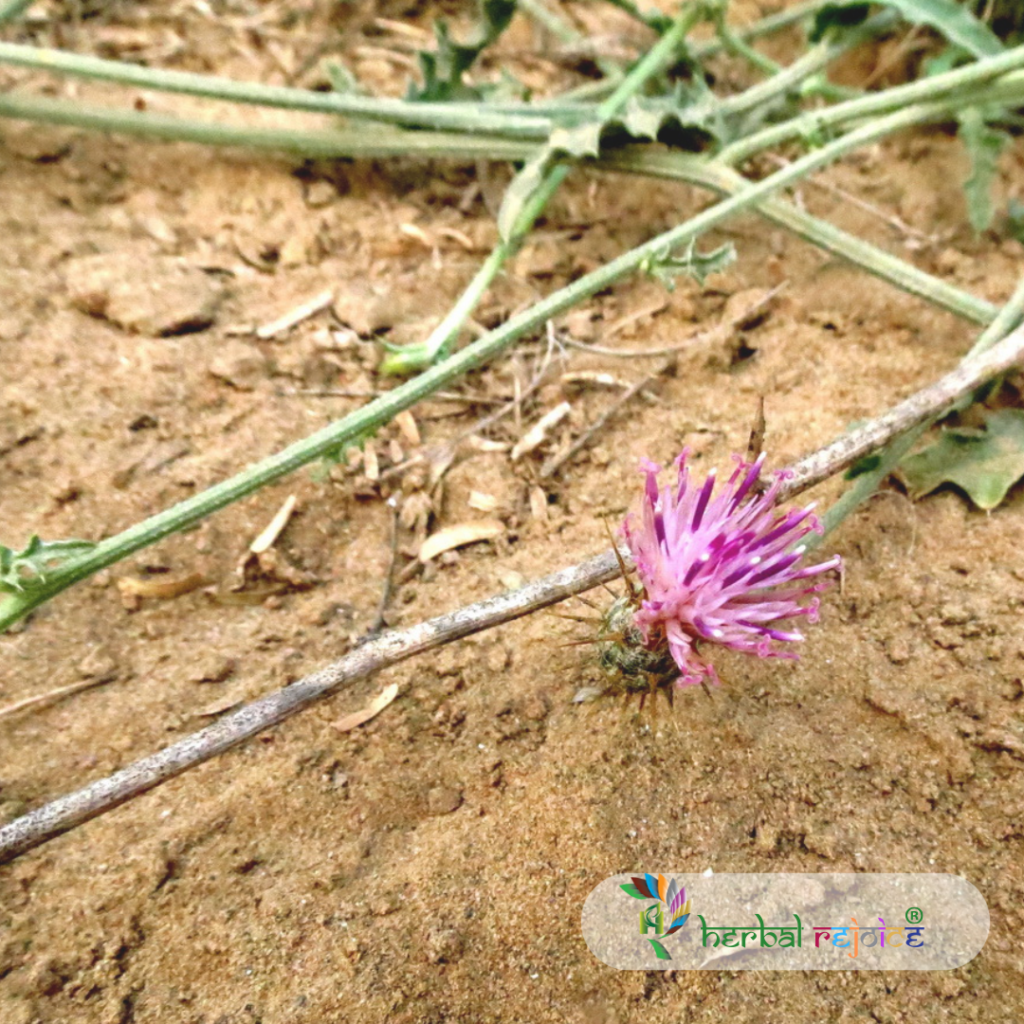Introduction
Volutarella ramosa, also known as Baadaavard or Al-baavard in Unani medicine, is a medicinal plant that belongs to the Compositae family. It can be found all over India, except in West Bengal and eastwards. This plant is also known by its synonyms V. divaricata Benth & Hook. f. and Tricholepis procumbens Wight. In Maharashtra, it is called Bhu-dandi or Sukaayi in the local dialect.
Traditional Uses
One of the key medicinal properties of Volutarella ramosa is its role as a deobstruent, aperient, febrifugal, and styptic. It is commonly used in the treatment of liver disorders. Additionally, the plant’s mucilage is used in cough remedies.

Chemical Constituents
Scientists have also discovered various compounds present in Volutarella ramosa. One such compound is a glucoside called procumbenin A. This glucoside breaks down into an aglycone called procumbenidine and glucose upon hydrolysis. The plant also contains other sugars like fructose, surcose, lactose, and maltose. These compounds contribute to the plant’s medicinal properties.
Health benefits
In Unani medicine, Volutarella ramosa is also referred to as Al-shukaayaa, Al-shaukatul-arabia, and Arabian Thorn. The fruit and root of the plant are used in Unani medicine to treat chronic fevers, liver diseases, and intestinal disorders. It is worth noting that Baadaavard is sometimes synonymous with Tricholepis procumbens Wight and Carduus bendictus.
In Ayurvedic medicine, Tricholepis species are known as Brahmadandi. They have been used for their medicinal properties as well. Additionally, Carduus nutans Linn., known as Gul-Baadaavard in Kashmir, is used as a febrifuge.
Conclusion
Volutarella ramosa is a versatile medicinal plant with a long history of traditional use in India. Its widespread availability across the country makes it easily accessible for those seeking natural remedies. Further scientific studies can help in uncovering additional therapeutic benefits and potential applications of this valuable plant.
Frequently Asked Questions
1. What is Volutarella ramosa?
Volutarella ramosa, also known as Baadaavard or Al-baavard, is a medicinal plant found throughout India.
2. What family does Volutarella ramosa belong to?
Volutarella ramosa belongs to the Compositae family.
3. Where can Volutarella ramosa be found in India?
Volutarella ramosa can be found all over India, except in West Bengal and eastwards.
4. What are the medicinal properties of Volutarella ramosa?
Volutarella ramosa has deobstruent, aperient, febrifugal, and styptic properties. It is commonly used in the treatment of liver disorders.
5. How is Volutarella ramosa used in cough remedies?
The mucilage of Volutarella ramosa is used in cough remedies due to its medicinal properties.
6. What compound has been discovered in Volutarella ramosa?
One compound discovered in Volutarella ramosa is a glucoside called procumbenin A.
7. What compounds contribute to the medicinal properties of Volutarella ramosa?
Compounds like fructose, sucrose, lactose, and maltose contribute to the medicinal properties of Volutarella ramosa.
8. How is Volutarella ramosa used in Unani medicine?
In Unani medicine, Volutarella ramosa is used to treat chronic fevers, liver diseases, and intestinal disorders.
9. What are the synonyms of Volutarella ramosa in Unani medicine?
The synonyms of Volutarella ramosa in Unani medicine are Al-shukaayaa, Al-shaukatul-arabia, and Arabian Thorn.
10. What parts of Volutarella ramosa are used in Unani medicine?
The fruit and root of Volutarella ramosa are used in Unani medicine.
11. How is Volutarella ramosa referred to in Ayurvedic medicine?
In Ayurvedic medicine, Tricholepis species are known as Brahmadandi.
12. What is Carduus nutans Linn. used for in Ayurvedic medicine?
Carduus nutans Linn., known as Gul-Baadaavard, is used as a febrifuge in Ayurvedic medicine.
13. What is the traditional use of Volutarella ramosa in India?
Volutarella ramosa has a long history of traditional use in India for its medicinal properties.
14. Why is Volutarella ramosa easily accessible in India?
Volutarella ramosa is easily accessible in India due to its widespread availability across the country.
15. What can further scientific studies help uncover about Volutarella ramosa?
Further scientific studies can help uncover additional therapeutic benefits and potential applications of Volutarella ramosa.
16. Can Volutarella ramosa be used to treat liver disorders?
Yes, Volutarella ramosa is commonly used in the treatment of liver disorders.
17. What are some other names for Volutarella ramosa in different regions of India?
In Maharashtra, Volutarella ramosa is called Bhu-dandi or Sukaayi in the local dialect.
18. Does Volutarella ramosa have any aperient properties?
Yes, Volutarella ramosa has aperient properties.
19. What compounds are present in Volutarella ramosa?
Volutarella ramosa contains compounds like fructose, sucrose, lactose, and maltose.
20. Are there any potential applications of Volutarella ramosa beyond its traditional use?
Yes, further scientific studies can help uncover additional therapeutic benefits and potential applications of Volutarella ramosa.


